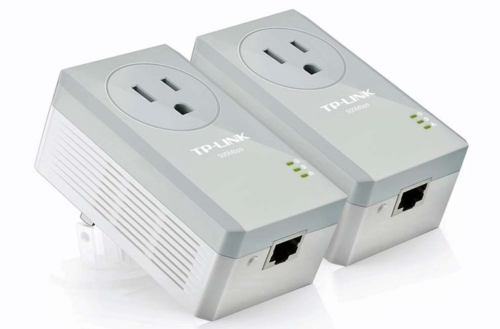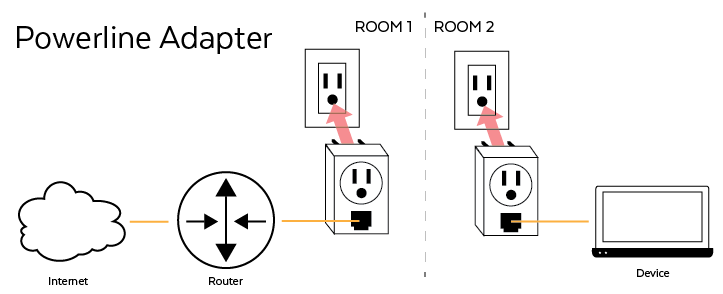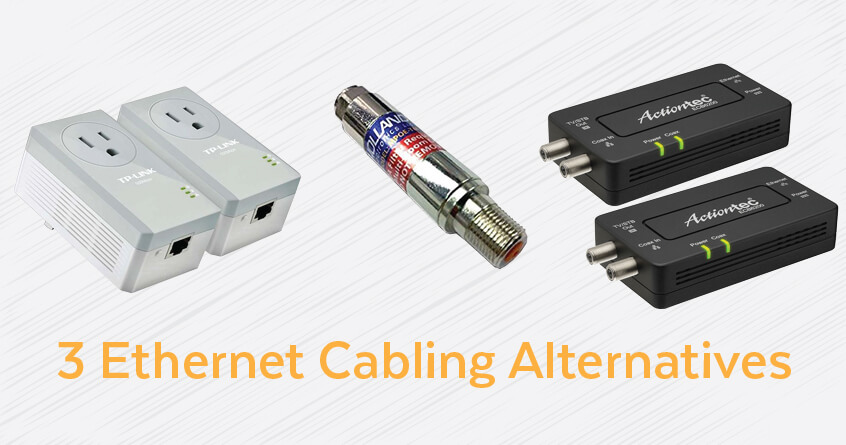In this guide, we’ll be highlighting three powerful Ethernet cabling alternatives that will make your life a whole lot easier.
Although WiFi is a convenient luxury – one that we’ve grown accustomed to – it certainly has its shortcomings: random dropouts, slow speeds, and limited range are all issues that must be contended with.
Ethernet cables (including PoE) are a great way to alleviate many of WiFi’s shortcomings. You can route Ethernet cables through your home or office, providing a direct, fast, and secure connection to all of your devices. You won’t have to worry about losing signal or slow WiFi connections due to thick walls or too much distance.
However, sometimes running Ethernet cables can also be a pain in the neck. Especially if you’re new to the networking space, running Ethernet cables through the floor or the wall can be challenging.
If only there was a way to make use of the existing infrastructure, rather than having to painstakingly run cables yourself…
Enter Ethernet cabling alternatives. Luckily, there are several great ways to make use of the existing cabling in your place of work; whether you use the electric, phone, or COAX cables, you don’t necessarily have to spend your precious time and hard-earned money configuring network cables.
Powerline Adapters
 Powerline adapters are one of the popular Ethernet cabling alternatives – they are devices that send data signals via your home’s electrical wiring.
Powerline adapters are one of the popular Ethernet cabling alternatives – they are devices that send data signals via your home’s electrical wiring.
You may be wondering how data can be sent to devices via power lines – shouldn’t they be busy transmitting electricity?
Well, comparatively to sound and the frequency of a WiFi band, AC power lines have their own waveforms with a frequency of 50-60Hz (depending on where you live). Powerline adapters use different frequencies, from 2,000,000 to 86,000,000 Hz (2-86 MHz). Similarly, DSL internet uses phone wiring to send data using a different frequency.
Although powerline’s theoretical maximum performance is approximately 2 Gbit/s, your real-world performance is going to be 100-200 Mbit/s. Still, this data speed is sufficient even for streaming video in 4K resolution. Moreover, powerline adapters have better network consistency and latency than traditional WiFi.
It’s also important to note, however, that data rates may suffer due to old and outdated electrical wiring. Moreover, if you try to use two powerline adapters that are far from one another, let’s say several stories apart, speeds will also deteriorate quickly.
You may want to try configuring your powerline network with different outlet combinations in an effort to optimize network speeds, as some outlets will prove more useful than others. High power devices such as televisions and microwaves could cause slowdowns if they’re running on the same circuit.
Lastly, you’ll only be able to establish a powerline network if both outlets are connected to the same breaker box. If you’re in a large home or office with multiple breakers, you won’t be able to use powerline if both of the outlets aren’t connected to the same circuit.
When it comes to powerline networks, less is more. If you use too many, the network will become congested. If you are attempting to configure an enterprise network, traditional Ethernet and PoE is going to be your best bet.
With that being said, it would be wise to buy your first set of powerline adapters from a store offering a good return policy. This way, you can get your money back if powerline proves to be less than ideal for your home or office.
When it comes to installing powerline adapters, it’s actually pretty easy. Simply connect an ethernet cable into your router, and plug the other end into the wall outlet.
Next, plug the other powerline adapter into the wall near your device, and then plug the last ethernet cable into your device. It’s as easy as pie!

Make sure you plug your adapters directly into the wall UPS battery backups, power conditioners, surge protectors, power and strips may filter and block networking frequencies, mistaking them for unwanted noise.
It would also be wise to follow your powerline adapters security instructions after installation, especially if you are living in an apartment or townhouse. You can set up a password for the powerline network, keeping your sensitive information safe from unwanted eyes.
Anyone sharing an electrical circuit with you has the ability to access your powerline network if it is not password protected. Just like you password protect your WiFi network, you also need to secure your powerline network.
PoLRE
Power over Long Reach Ethernet (PoLRE) is another one of the easy alternatives and is a fantastic way to provide network data to devices that are too far away from your router to receive a reliable WiFi signal.
Marketed by Cisco, PoLRE uses telephone-grade unshielded twisted pair wiring to send data signals through your home using the existing infrastructure. No latency issues associated with WiFi, and no Ethernet installation headaches.

PoLRE over COAX extender kits give the user the ability to exceed the 100-meter limitation of standard Ethernet cables. This option, unlike powerline adapters, allows you to supply not only data signal but power as well to your PDs (Powered Devices). This includes but is not limited to VoIP phones and WAPs (Wireless Access Points) at any location in your home or office with the existing infrastructure.
Ethernet over COAX (MoCA Adapter)
 Just like powerline adapters, MoCA adapters are faster than WiFi and far easier to install than traditional Ethernet cabling, making them one of the easier alternatives.
Just like powerline adapters, MoCA adapters are faster than WiFi and far easier to install than traditional Ethernet cabling, making them one of the easier alternatives.
MoCA adapters use the existing COAX cabling in your home to transmit networking frequencies from your router to your devices. MoCA, also known as Multimedia over COAX, allows you to achieve network speeds close to that of a traditional Ethernet network without having to run Ethernet cables through your house.
This is particularly useful if your router is on one side of your house, but your network devices are on the other side. MoCA adapters have a theoretical maximum network speed of up to 1 Gbit/s – although, similarly to powerline adapters, actual speeds will likely be lower than the ideal maximum.
The current MoCA generation is a 2.0 bonded signal. You can use the same COAX cable that was previously only used by your television, meaning installing a second cable is not necessary.
Unfortunately, AT&T and DirectTV’s U Verse setup do not support MoCA. If you have either of the service providers previously listed, you’ll have to explore other options.
Some modern modems already support MoCA, meaning you’ll only have to buy one MoCA adapter where you want to deliver the network signal. Otherwise, you’ll have to buy two adapters: one to convert Ethernet signal to COAX signal, and the other to convert the COAX signal back to Ethernet once it has reached its final destination.

As far as installation goes, it’s actually pretty easy. First, attach a PoE filter to your router where you’d normally connect the COAX cable. It screws on easily as your COAX cable normally would, and it prevents the MoCA signal from going into your router.
 You’ll also need to install a second PoE filter where the COAX cable enters your home, preventing the data signal from being transmitted to the main line. This added security will ensure the safety of your network from intruders on the same COAX line.
You’ll also need to install a second PoE filter where the COAX cable enters your home, preventing the data signal from being transmitted to the main line. This added security will ensure the safety of your network from intruders on the same COAX line.
In any event, MoCA is a fantastic way to provide network signal to your devices that are too far from your router to receive a strong WiFi signal, without shelling out a bunch of time and money.

Join the Discussion 4 Comment